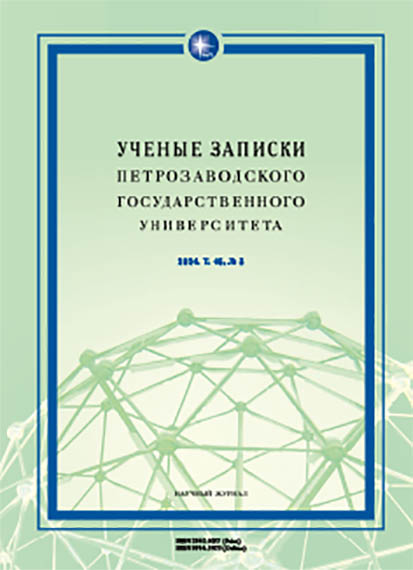СУЖАЮЩИЕСЯ ДИФТОНГИ В ДИАЛЕКТНОЙ СИСТЕМЕ КАРЕЛЬСКОГО ЯЗЫКА
NARROWING DIPHTHONGS IN THE KARELIAN DIALECTAL SYSTEM
Author(s): Irina Petrovna NovakSubject(s): Phonetics / Phonology, Finno-Ugrian studies
Published by: Петрозаводский государственный университет
Keywords: Karelian language; dialectology; linguistic geography; dialectometry; cluster analysis; vocalism; narrowing diphthongs;
Summary/Abstract: The article reports the interim findings of a study on the dialectal system of the Karelian language. The subject of the analysis is the narrowing i-diphthongs in the stressed and post-tonic syllables. The material for the cluster analysis was taken from the relevant sections of the Murreh Karelian Dialect Database, which primarily consists of digitalized working materials of the Dialectological Atlas of the Karelian Language (1997). The analysis produced seven cluster maps representing reflexes of the Balto-Finnic narrowing diphthongs in all Karelian supra-dialects: in the position before the consonant combinations sk / šk, st / št (in a stressed syllable and an unstressed syllable in verbal word forms), in nominals formed using the word formative suffix *-ise- (in the initial form, in partitive singular form, and in other oblique cases), in the position before contracted verb marker -ta / -tä, and at the end of nominal and verbal word forms with the diphthong oi / öi. For each of these positions, comparisons were drawn with materials from the Veps, Izhorian, and East Finnish dialects, as well as with data from early written Karelian artifacts, creating a retrospective of the formation history of the dialectal differences. A composite cluster map shows the isoglosses of the dialect differentiating phenomenon that segregated Karelian sub-dialects into six main distribution ranges: northern sub-dialects of Karelian Proper, its southern sub-dialects, Livvi sub-dialects, a group of sub-dialects transitional between Karelian Proper and Livvi, a group of Ludic sub-dialects (excluding Mikhailovskoye sub-dialects), and the Mikhailovskoye group of Ludic sub-dialects. The results of this study are expected to be used for the further refining of the dialectal classification of the Karelian language
Journal: Ученые записки Петрозаводского государственного университета
- Issue Year: 46/2024
- Issue No: 3
- Page Range: 21-27
- Page Count: 7
- Language: Russian

